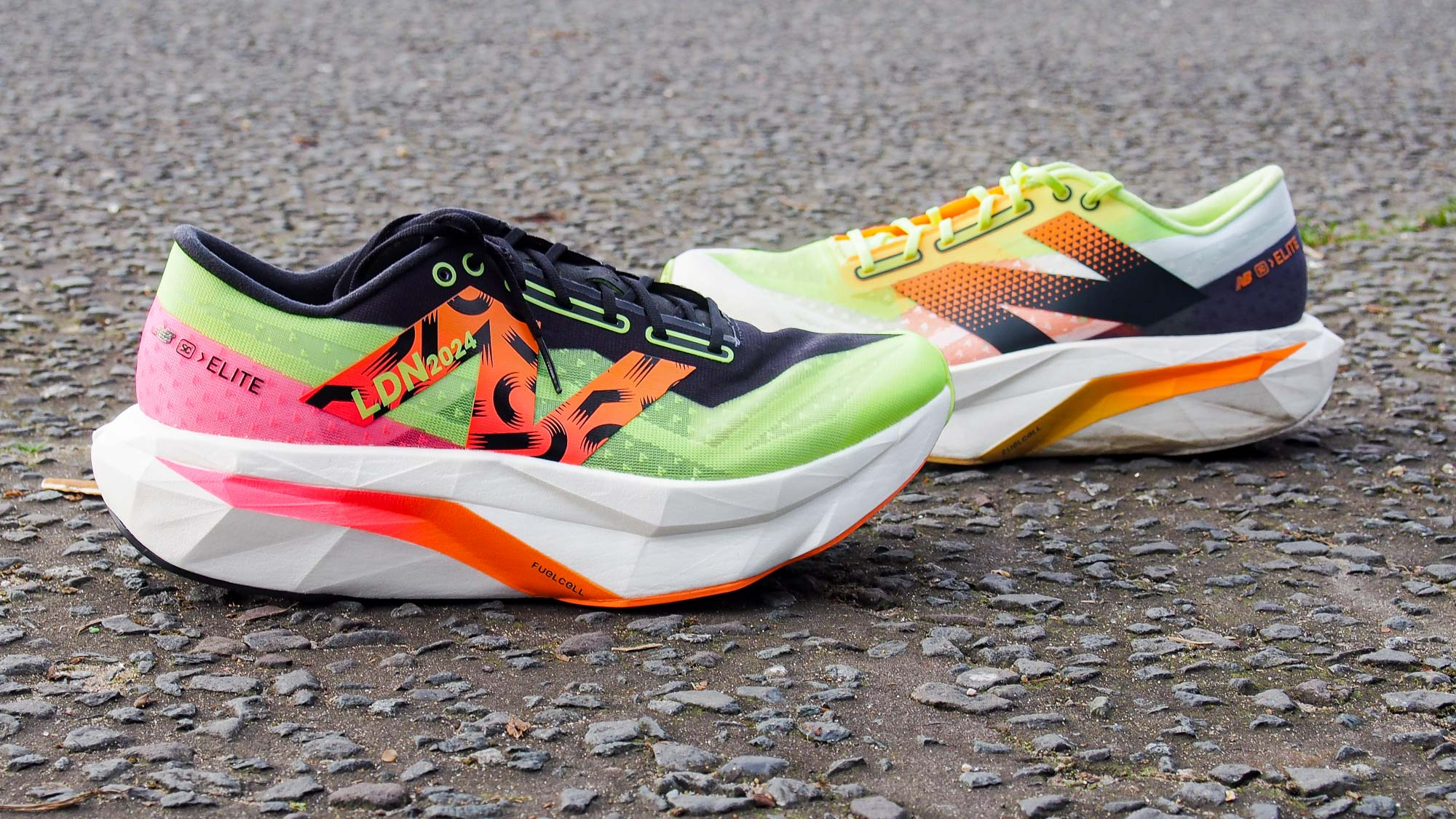
New Balance is part of the running shoe establishment and with its FuelCell SC Elite v4, it’s all about giving you something that’s built to bring the speed over the marathon distance.
The follow-up to the impressive Elite v3 makes changes to the upper, midsole, and outsole to make the v4 better to run fast in, all while packing in familiar racing shoe ingredients like PEBA foam and a carbon plate to make it race-ready.
The only way to know if a marathon shoe is made for marathons is to run one, so I laced up the New Balance FuelCell SC Elite v4 to take on the TCS 2024 London Marathon to see what New Balance’s carbon racer is made of, and whether it's one of the best carbon plate running shoes around right now.
New Balance FuelCell SC Elite v4 review: price and availability
The New Balance FuelCell SC Elite v4 launched globally on February 1st, 2024, with a hefty $249.99 price tag. You'll pay the same for all colorways, including the London edition that I tested. It's a sizeable sum, but that puts the FuelCell SC Elite v4 in line with other carbon plate racing shoes.
The Nike Alphafly 3 is pricier at $285 and the Asics Metaspeed Sky Paris costs $250. Then there's the HOKA Cielo X1, which launched on the same day as the Elite v4, that'll set you back $270. So, they're not cheap, but neither is the competition.
New Balance FuelCell SC Elite v4 review: design and fit
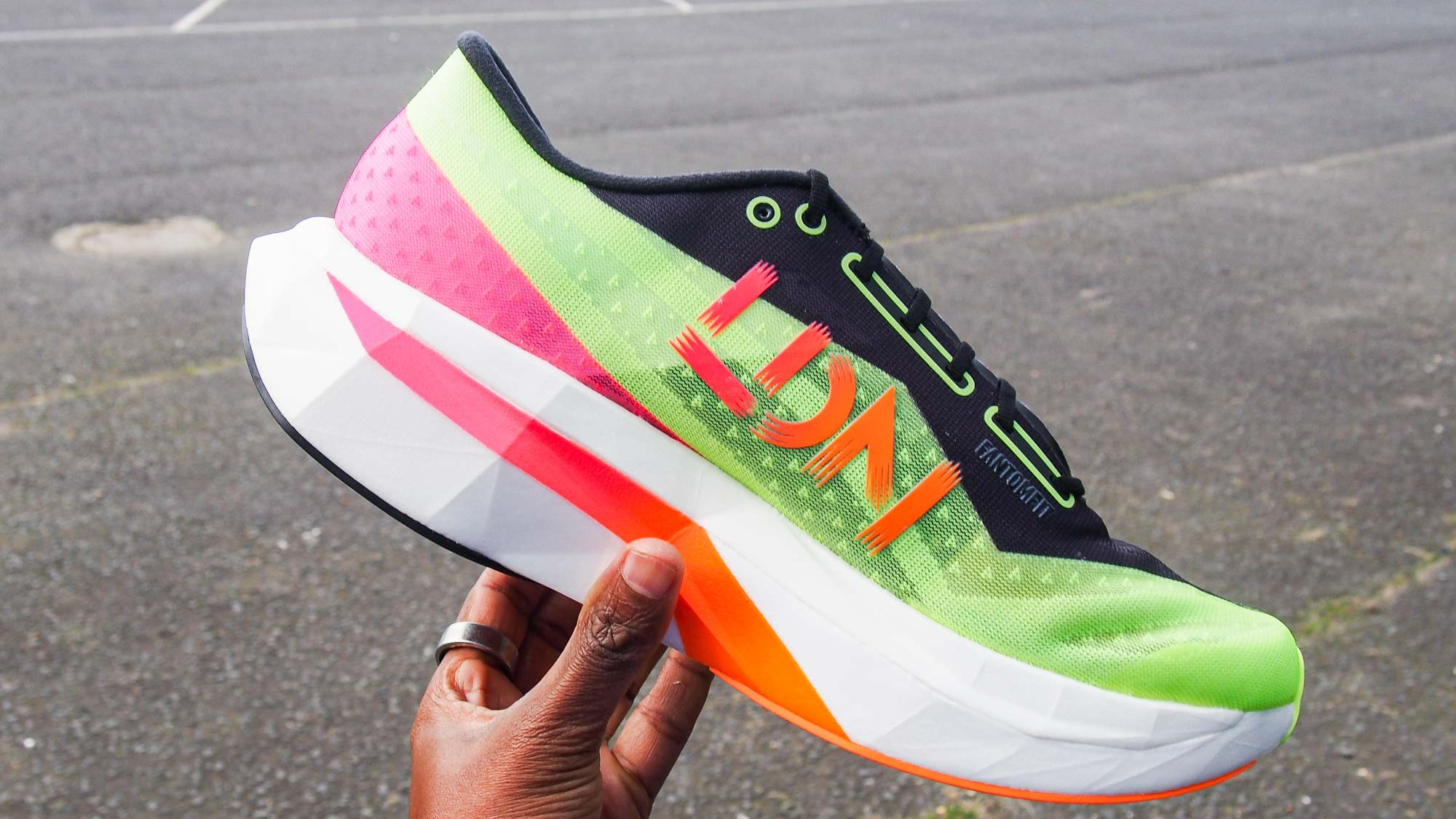
New Balance has done some reworking here that makes the FuelCell SC Elite v4 fit and look a lot different from the Elite v3. It retains the 4mm drop, compared to the Alphafly 3's 8mm, so the New Balance shoe keeps you closer to the ground.
You'll also get the same stack height as the v3; a World Athletics-approved 40mm at the heel and 36mm at the forefoot. I trained in the US 8.5, which also had the same hugging, generally good fit found on the v3, with plenty of space up front and at the side of your toes.
The shoe narrows at the middle to give a locked-in, racing-style feel, but it's not as narrow as other marathon shoes I've tried, like the HOKA Cielo X1 and Asics Metaspeed Sky Paris. But if you like space in your shoe, it might be worth going up half a size in the New Balance shoes.
Upper
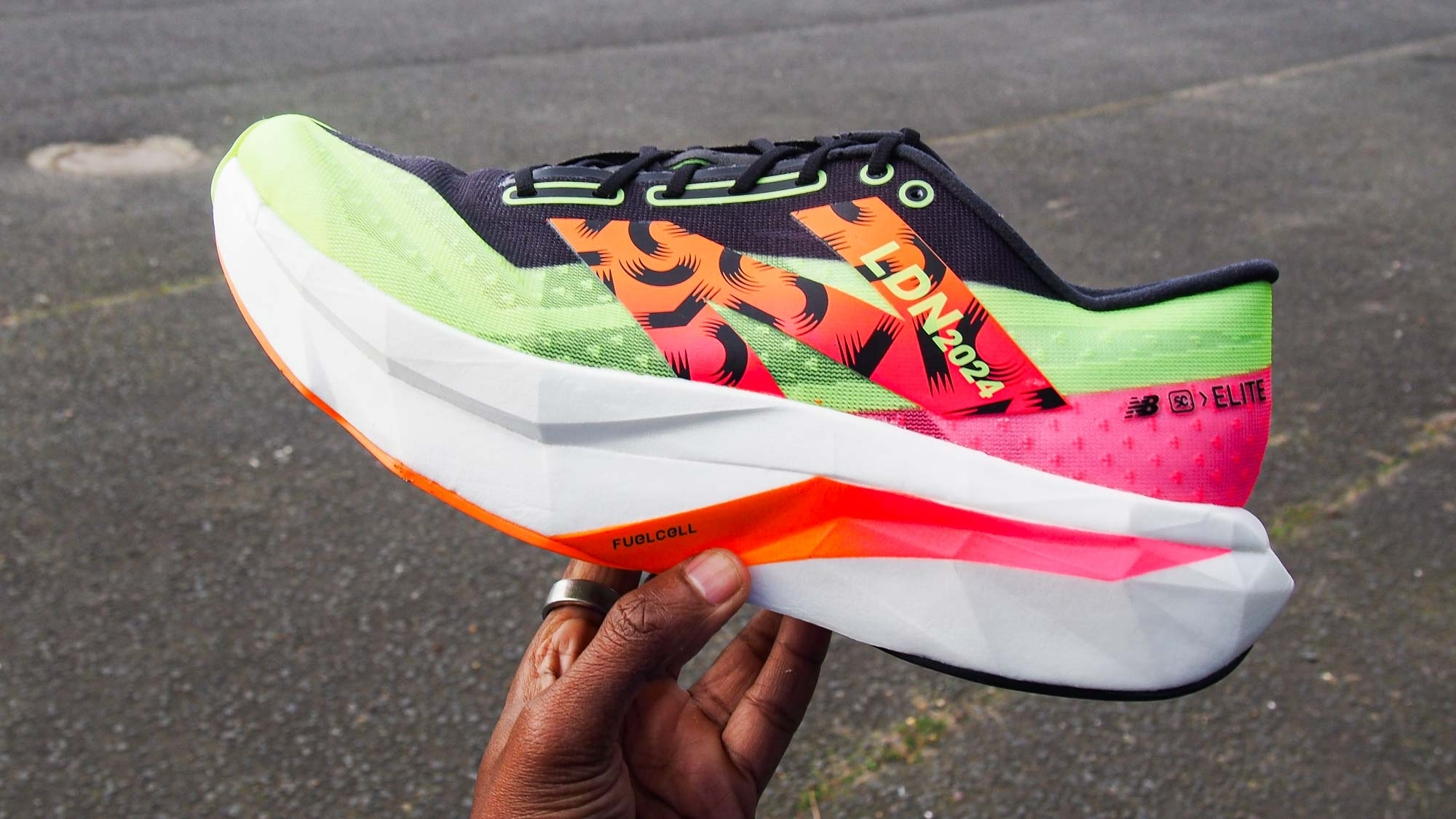
The FuelCell SC Elite v4 has a newly designed upper, ditching the knit material of the v3 for a more breathable mesh that you'd generally find on running shoes. They're easy to slip on, and you can get a good lockdown with the flat laces that sit on top of a fairly skinny tongue.
However, during my initial training runs, I found the lockdown at the heel didn't quite work and there was some rubbing on my heel. From talking to other runners, this seems to be a common experience with these shoes.
There isn't any internal heel padding for extra comfort either. So I resorted to using a runner's know at the top of the laces to make the shoes fit more securely and prevent this heel rub. This worked well and prevented any mid-marathon discomfort too.
Midsole
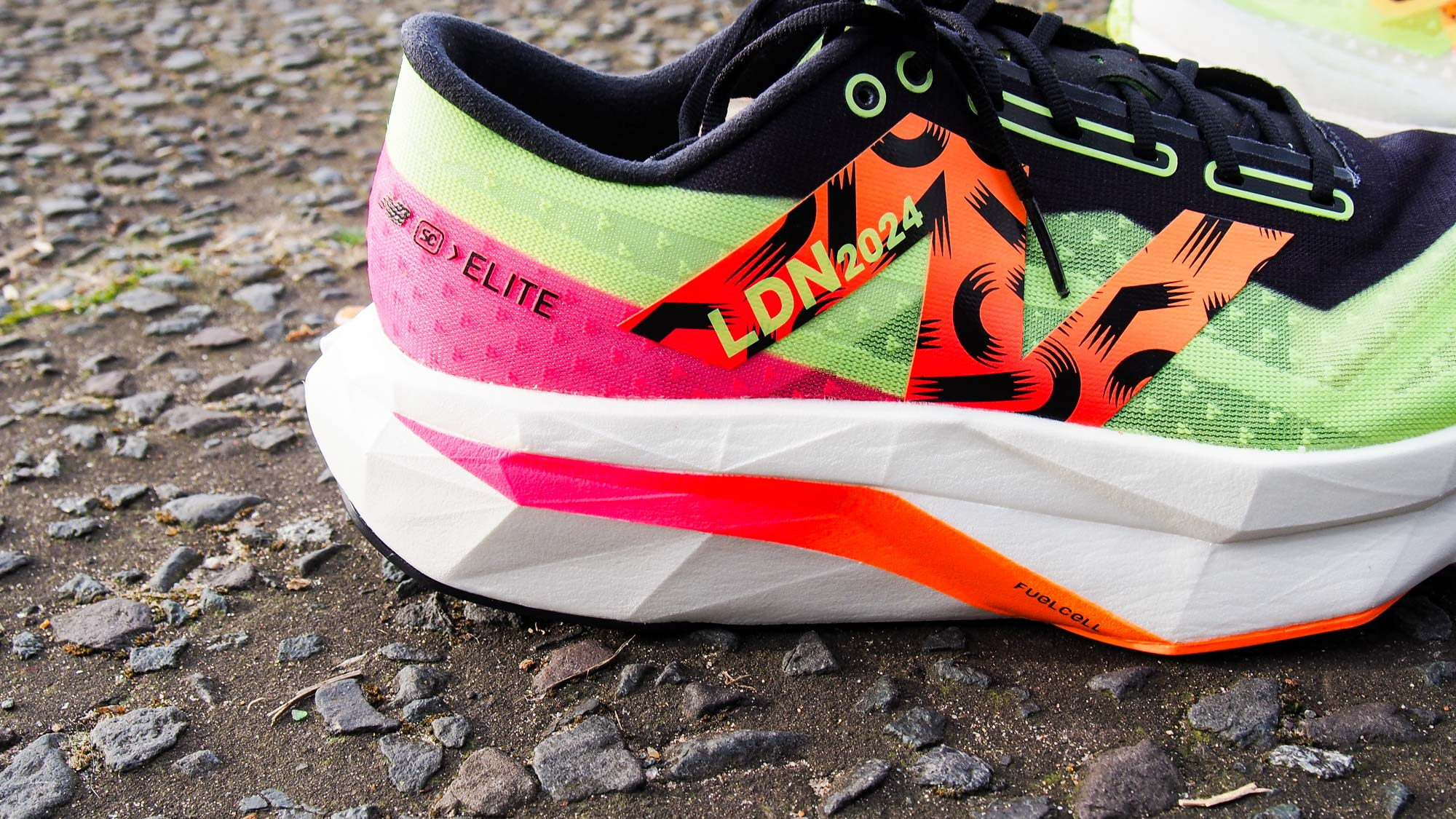
The FuelCell SC Elite v4 packs in a full-length of its PEBA-based Fuelcell midsole technology. Meanwhile, Puma, Asics, and HOKA use PEBA to deliver that bounce and welcome energy returns over distance.
That matches up with New Balance’s Energy Arc carbon plate which now adopts a curvier design compared to the Elite v3. The plate is lighter, but the shoe is heavier overall, clocking in at 8oz vs 7.4oz for the v3.
Outsole
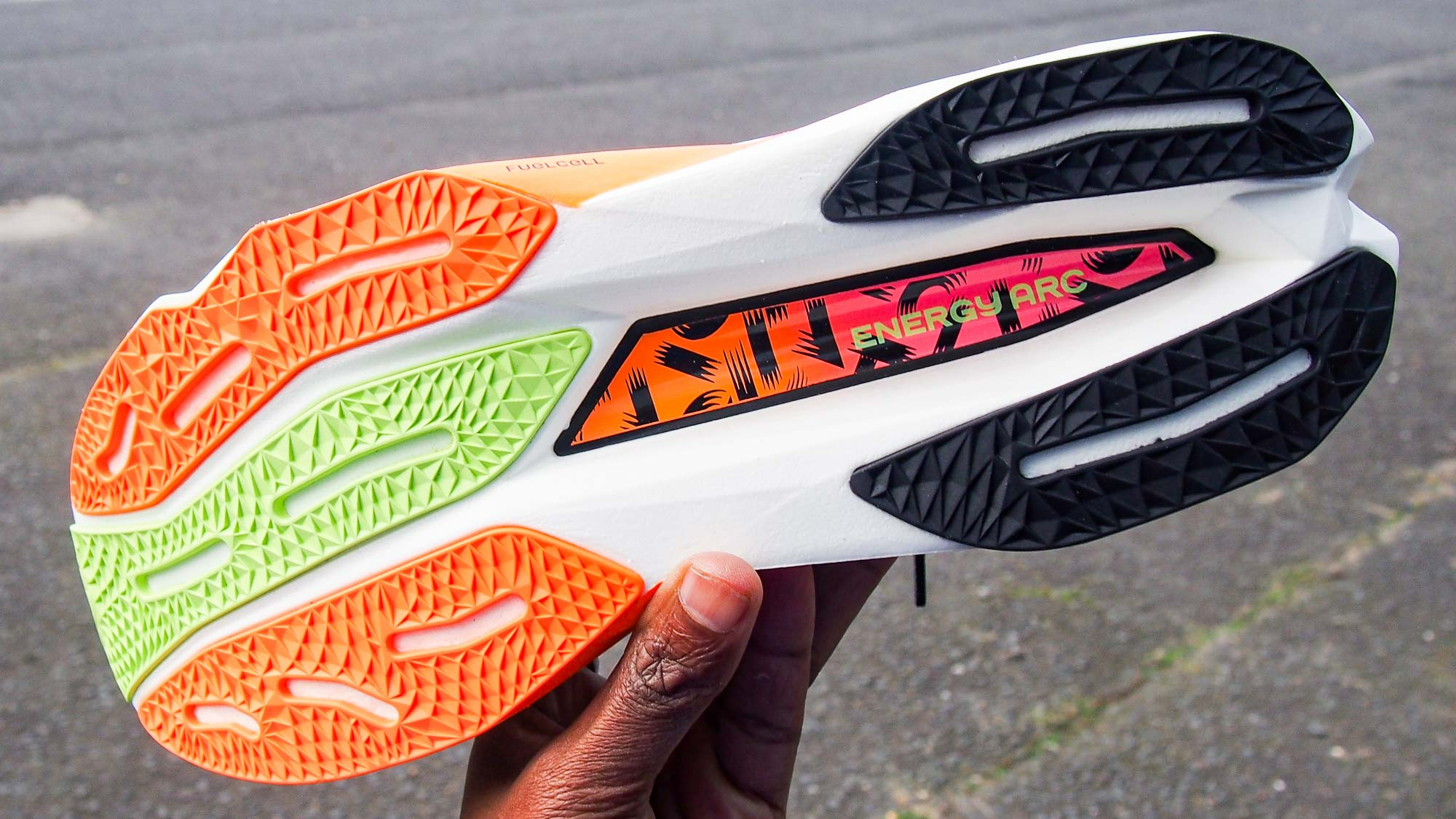
New Balance didn't radically alter the outsole on the v4, but there's a bit more rubber, making them ideal for clocking up the miles. The rubber strips at the heel and forefoot are larger too, which contributes to the increased weight but it makes the shoe more durable.
I used the shoes for the marathon alongside short and long runs in wet, dry, and rainy conditions, and indoors on the treadmill. The outsole grip felt solid, I didn't slip around in the rain, and the marathon didn't tear it to pieces either.
New Balance FuelCell SC Elite v4 review: performance
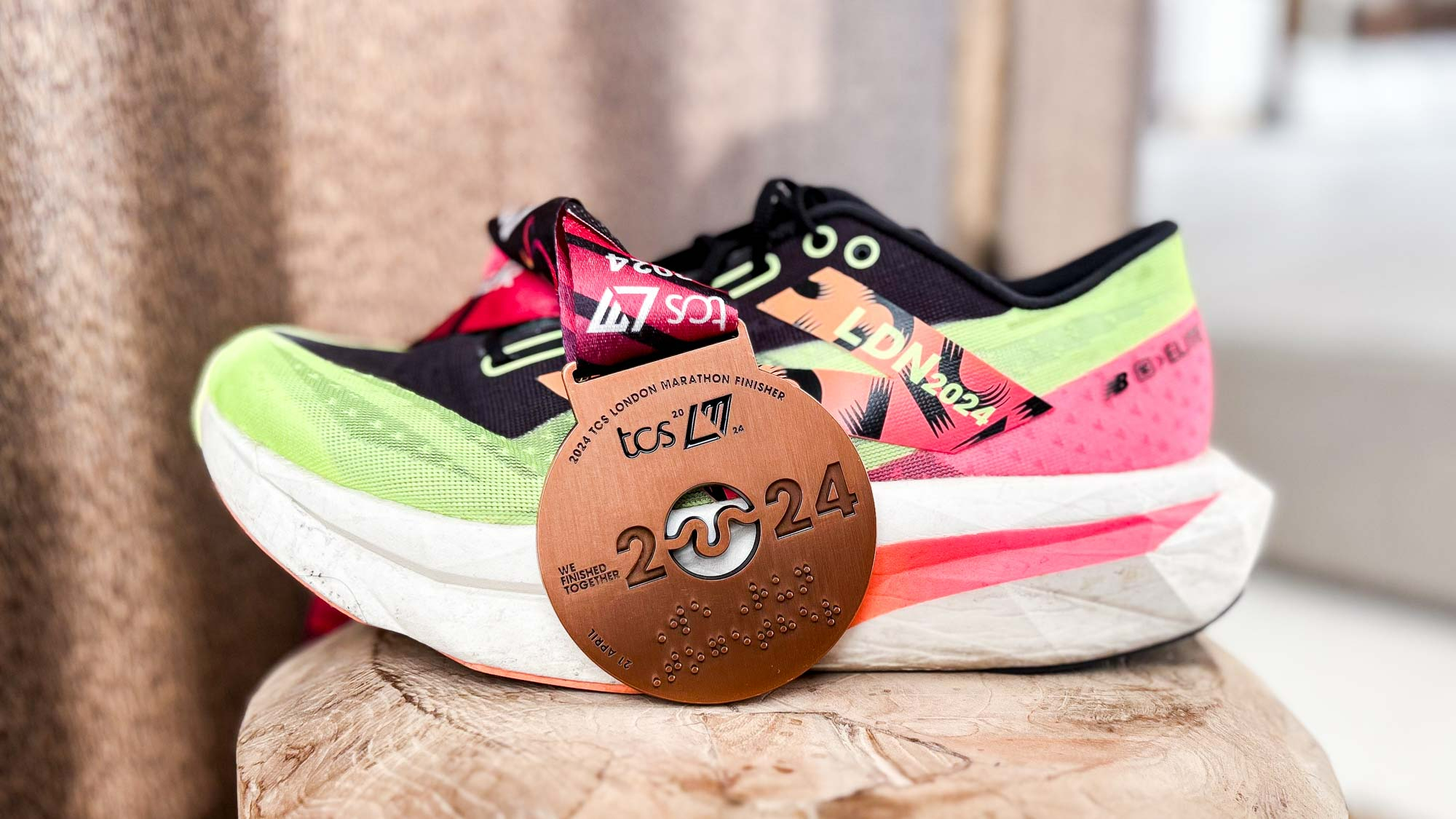
I’ve had two versions of the FuelCell SC Elite v4 to test. In the first, I covered more than 50 miles, while I notched up around 12 miles in the London edition before putting it to the marathon test.
I previously used the Elite v3 for similar runs and found it was a lively shoe for speedwork and uptempo sessions, but lacked some longer distance performance. That's changed with the v4, but not every change is a winner.
The FuelCell SC Elite v4 is more comfortable over longer distances, with a softer midsole you can sink into, but the rocker isn't quite as aggressive. Instead, this is a shoe you can get up to speed in, but there's less rebound in the midsole, so you can stick to an even pace.
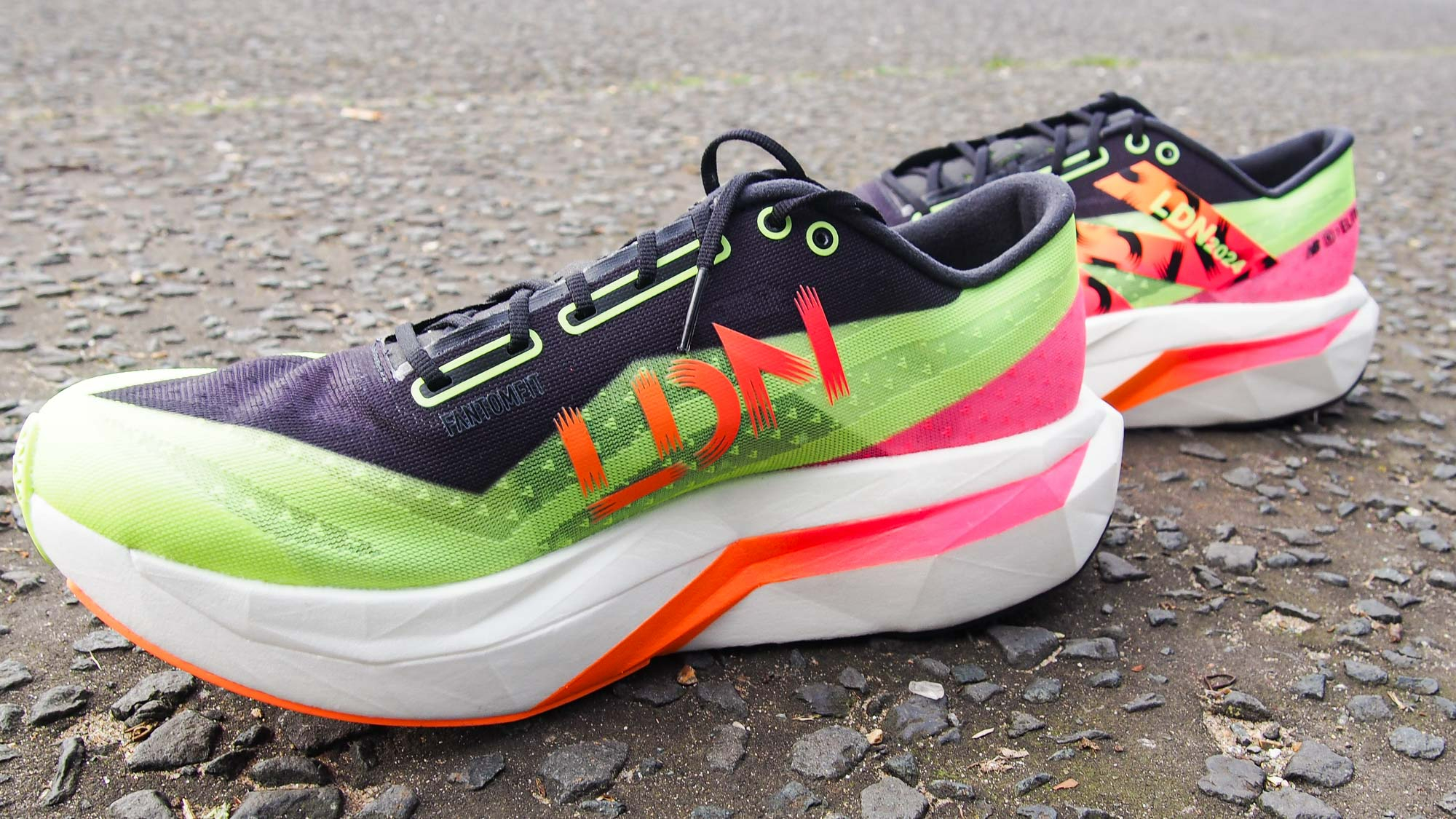
There's some nice bounce in the shoe that makes the ride enjoyable but it's not as propulsive as with some other shoes. It definitely feels like a race shoe though, just built differently. During training, I found the shoe a good choice when I was aiming to cruise at my marathon pace.
When it came to marathon day, I had planned to run a comfortable pace, around 7.30-7.40 minutes/mile pace to get me around the course at around 3.25-3.30 and finished up with a 3.26 time. But during the first half, I was actually running quicker than I realized in the shoes.
During the second half, I reigned things in slightly, mainly to make sure I got to that finish line without any issues. I think that’s where I appreciated the v4 most because while I was easing off, the ride still felt controlled, smooth, and stable.
A shoe with a more aggressive ride may have posed more issues for me in those latter stages, but I felt I could cruise at my target pace, still at a spritely speed and there wasn’t any sort of discomfort along the way.
Should you buy the New Balance FuelCell SC Elite v4?
I did a lot of training in the New Balance FuelCell SC Elite v4 and ran a whole marathon in them, and I feel that this is a better shoe for longer runs than its predecessor. It may even be one of the most accessible carbon plate racing shoes I've tested.
I think it’s a great marathon and racing shoe if you need to mix up your paces or ease off. But having used several other marathon super shoes lately, I feel it lacks some of the magic you can get with the competition.
For example, the Saucony Endorphin Pro 4 is another shoe you can cruise along in, but it feels like it has some extra pop in shorter and longer distances. And it's cheaper than the New Balance FuelCell SC Elite v4.
That doesn't mean I wouldn't recommend the Elite v4 though. The New Balance shoes served me well on the streets of London, and if you’re after a shoe built for the marathon that isn’t just for elite runners, this is one worth considering.







